Photographs: NASA/JPL-Caltech/Space Science Institute
Titan, Saturn's largest moon, appears to be strung like a bead on the planet's rings, which cast shadows onto the southern hemisphere of the gas giant in a new image from Cassini spacecraft.
images...
IN PHOTOS: Saturn's rings get an AMAZING bead!
Image: Titan's atmosphere makes Saturn's largest moon look like a fuzzy orange ball in this natural color view from the Cassini spacecraft.Photographs: NASA/JPL-Caltech/Space Science Institute
Faint but exquisite detail in the gas giant's upper atmosphere paints a tranquil scene.
A thin band of bright white ammonia ice clouds is etched into the planet's disc towards the top of the image while clouds dotted below are faded scars of a huge storm that raged across the planet through much of 2011.
IN PHOTOS: Saturn's rings get an AMAZING bead!
Image: The colorful globe of Saturn's largest moon, Titan, passes in front of the planet and its rings in this true color snapshot from NASA's Cassini spacecraft.Photographs: NASA/JPL-Caltech/Space Science Institute
Shadows cast by Saturn's iconic rings appear painted onto the planet's southern hemisphere in two thick bands broken by thin, lighter stripes, reflecting the intricacies of the individual rings.
IN PHOTOS: Saturn's rings get an AMAZING bead!
Image: Saturn's rings cut across this view of the planet's largest moon, Titan.Photographs: NASA/JPL-Caltech/Space Science Institute
As Saturn's seasons progress towards northern hemisphere summer, the rings will appear to grow wider and wider.
IN PHOTOS: Saturn's rings get an AMAZING bead!
Image: Saturn's rings cut across an eerie scene that is ruled by Titan's luminous crescent and globe-encircling haze, broken by the small moon Enceladus, whose icy jets are dimly visible at its south pole.Photographs: NASA/JPL-Caltech/Space Science Institute
Meanwhile, Titan appears to hang on the planet's rings like a bead on a necklace. The effect is a result of the line-of-sight viewing position; Titan orbits Saturn at an average distance of 1, 221,870 km.
IN PHOTOS: Saturn's rings get an AMAZING bead!
Image: Encircled in purple stratospheric haze, Titan appears as a softly glowing sphere in this colourised imagePhotographs: NASA/JPL-Caltech/Space Science Institute
The moon is an enigma in itself: cloaked in a thick nitrogen-rich atmosphere, it is the only moon in the Solar System that has a dense atmosphere.
IN PHOTOS: Saturn's rings get an AMAZING bead!
Image: NASA's Cassini spacecraft chronicles the change of seasons as it captures clouds concentrated near the equator of Saturn's largest moon, Titan.Photographs: NASA/JPL-Caltech/Space Science Institute
Lakes of liquid hydrocarbons pool on its surface, and an active methane cycle plays a similar role to Earth's water cycle, complete with clouds and methane rain.
IN PHOTOS: Saturn's rings get an AMAZING bead!
Image: The Cassini spacecraft views the cratered surface of Saturn's moon Tethys in front of the hazy orb of the planet's largest moon, TitanPhotographs: NASA/JPL-Caltech/Space Science Institute
Cassini has been in orbit around Saturn since 2004 and is now in its second extended mission phase, the Cassini Solstice Mission, which will continue until 2017.
IN PHOTOS: Saturn's rings get an AMAZING bead!
Image: A crescent TitanPhotographs: NASA/JPL-Caltech/Space Science Institute
The Cassini-Huygens mission is a cooperative project of NASA, the European Space Agency and the Italian Space Agency.

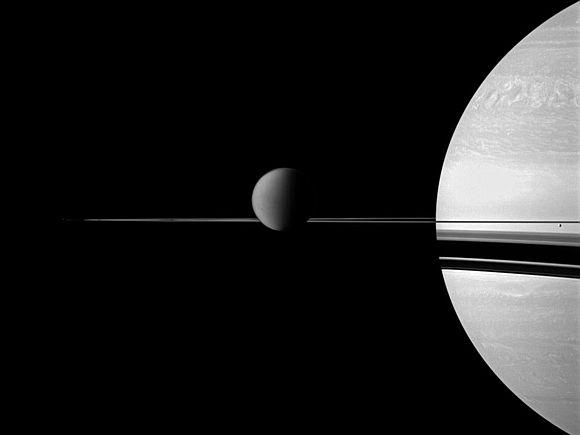
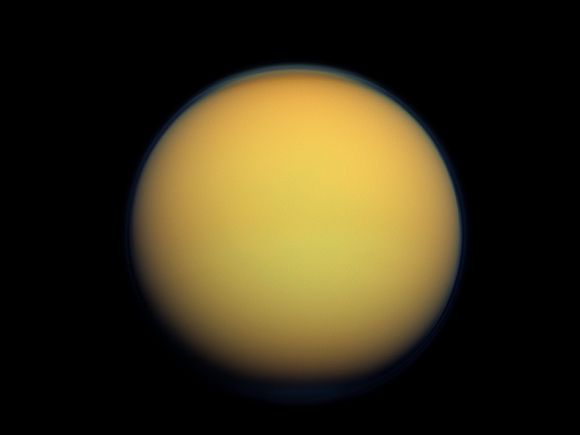
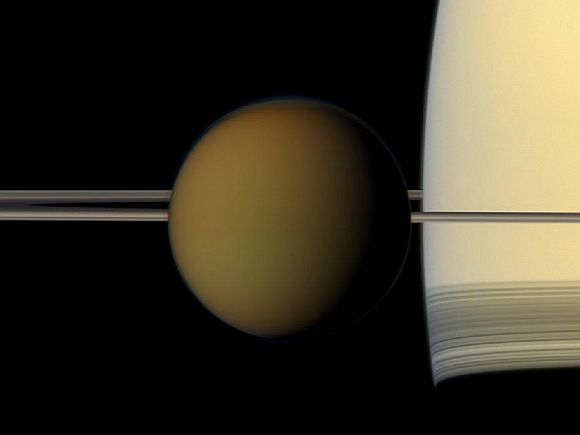
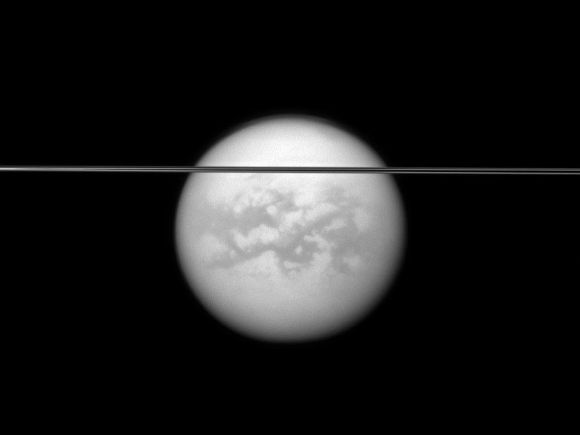

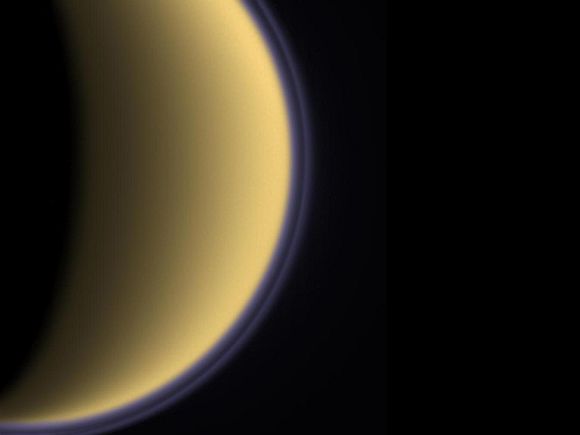
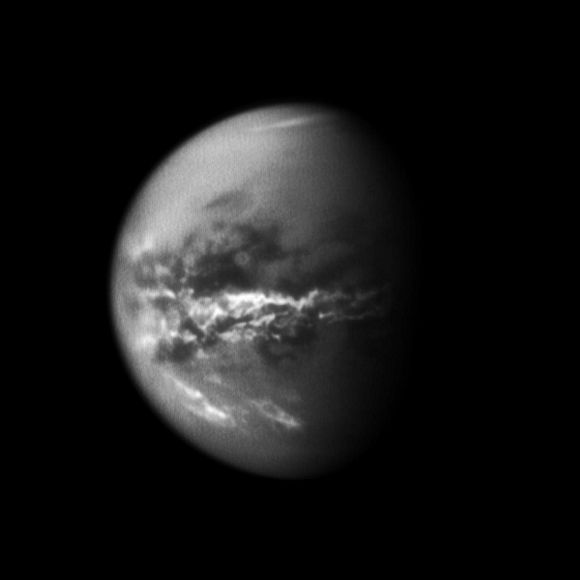
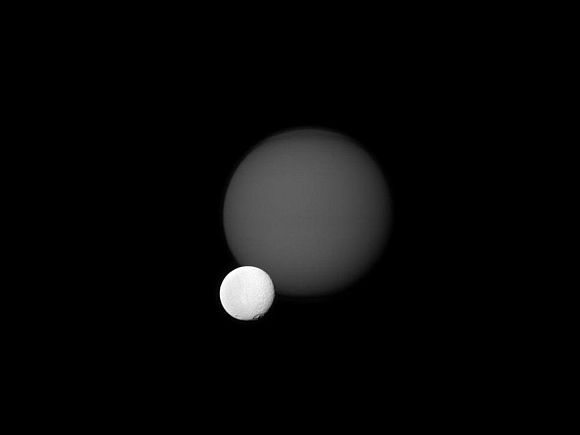
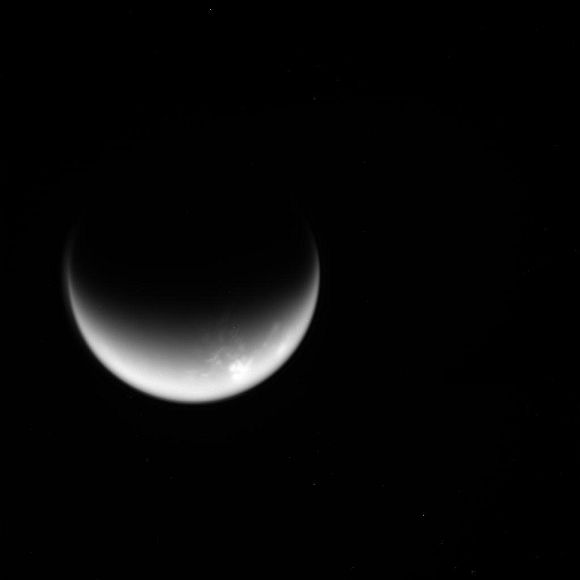
article